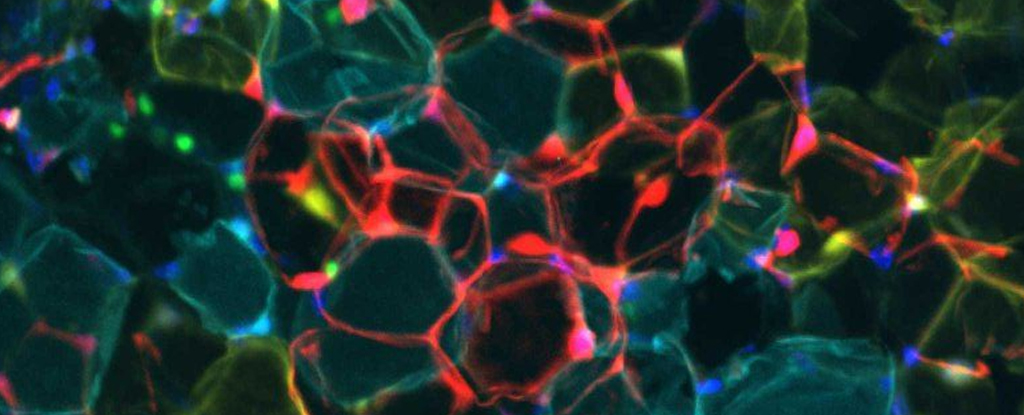White could be the new beige when it comes to fat cells, after the discovery of a switch that preserves the functions of fat tissue in mice, turning it from a lipid storage facility to a calorie burner.
Medical scientist Brian Feldman and molecular biologist Liang Li of the University of California, San Francisco, conducted a series of experiments on human cell cultures and mice that had been fitted with a switch for a gene that they suspected regulates our fat maintenance.
By depriving the mice of the transcription factor Klf15, the researchers were able to convert the identity of the ‘deeply stored’ white adipose tissue (WAT) into a more transient, thermoregulatory form called brown adipose tissue (BAT).
Fat tissue in mammals typically comes in two forms. White fat is like a long-term savings account for calories, holding lipids under our skin and around our soft internal organs to act as shock absorbers and insulators.
Brown fat, on the other hand, is darkened by a large number of cellular power generators ready to burn through the fuel supply at a moment’s notice. While in short supply in adult humans, infants (and hibernating mammals) are blessed with significant amounts of BAT to keep their sleeping bodies toasty warm.
For most of our evolutionary history, this age-dependent balance of WAT versus BAT has served us well. Adult members of our species stay warm by using fat as fuel for movement, while immobile newborns benefit from a more passive form of thermoregulation.
Of course, in environments where dietary fats are abundant and mobility is limited, it is far too easy to invest an abundance of unused lipids in the storage of white fat, which often becomes increasingly detrimental to our health.
Furthermore, nature does not make it easy to recover stored fats. This inspires researchers to look for ways to change the type of fat tissue.
“For most of us, white fat is not a rarity and we’re happy to get rid of it,” Feldman says.
Because Feldman’s previous research pointed to a role for Klf15 in fat metabolism, he decided to dig deeper and determine its specific functions.
The first big clue came in analyses that compared the amounts of Klf15 between different types of fat tissue. The transcription factor was relatively abundant in the white blood cells, prompting Feldman and Li to wonder what would happen if they deprived the tissues of the protein.
Knowing that isoproterenol stimulates brown tissue to generate heat, the pair administered doses of the compound to human WAT cultures and wild-type mice. There were clear signs that there was a relationship between brown fat activation and Klf15 levels, with follow-up research showing that an adrenergic receptor called Adrb1 was the key link.
A related receptor, called Adrb3, was already known to researchers. Animal studies showed that stimulating it could prompt white fat cells to change identity and become browner, making it easier for them to get rid of their reserves.
Clinical trials are investigating whether Adrb3 agonists improve metabolic health in humans. Based on the findings that the receptor is undetectable in human WAT, Feldman is optimistic that Adrb1 may be a more suitable therapeutic target.
In a final test, mice equipped with a kind of Klf15 gene switch were found to increase their expression of Adrb1, causing white adipose tissue to become “beige.”
If we can find a way to use drugs to induce a similar response in humans, we could overcome the obstacles many people face in accessing their fat stores, without the side effects associated with many other approaches.
“A lot of people thought this wasn’t feasible,” Feldman says.
“We have not only shown that this approach works to convert white fat cells to beige, but also that the bar for this is not as high as we thought.”
This research was published in the Journal of Clinical Research.
